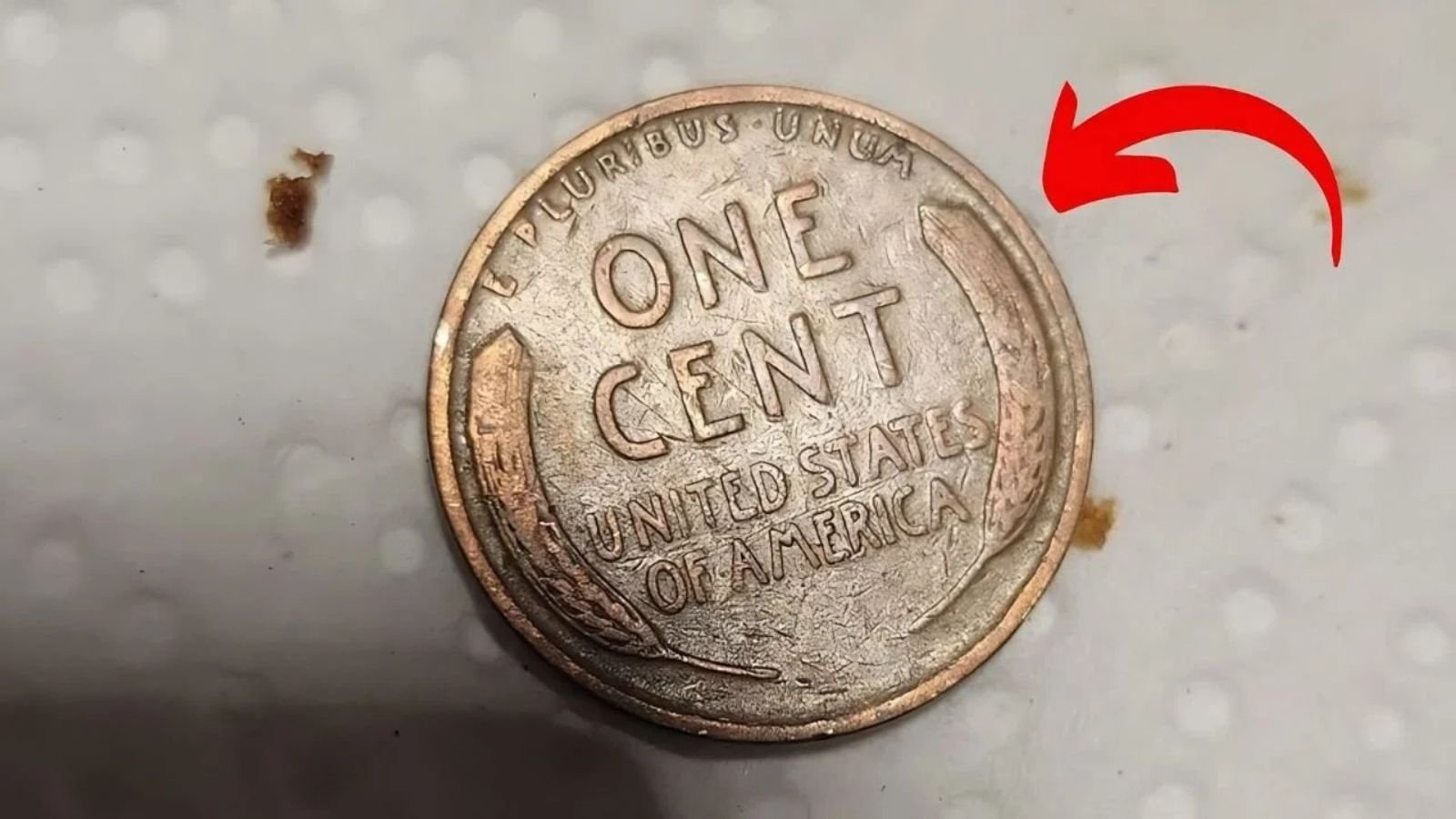Let’s face it—most of us treat pennies like a nuisance. They get tossed into tip jars, left behind at the checkout counter, or dropped into the bottom of a purse without a second thought. But what if one of those overlooked coins turned out to be worth more than a luxury yacht? Sounds unbelievable, right?
Yet that’s exactly what happened with one particular Lincoln Wheat Penny that has stunned coin collectors and investors alike. This humble-looking cent, once in normal circulation, has been valued at an astounding $1.2 billion. And even more astonishing? It was discovered not in a museum or hidden safe, but from a regular bank roll.
In this article, we’ll explore the fascinating story behind this billion-dollar coin, the rich history of the Lincoln Wheat Penny, and how you might still have a fortune sitting inside your coin jar.
The Historic Roots of the Lincoln Wheat Penny
The Lincoln Wheat Penny is more than just small change; it’s a piece of American history. First minted in 1909, this coin was introduced to commemorate the 100th birthday of President Abraham Lincoln. It was a significant shift in U.S. coinage, as it marked the first time a real person appeared on an American coin. Prior to this, U.S. coins typically featured allegorical figures like Lady Liberty.
Renowned sculptor Victor D. Brenner was tasked with designing this historic coin. The obverse features a dignified profile of Lincoln, while the reverse side shows two sheaves of wheat, representing prosperity and America’s agricultural strength. These wheat ears gave the coin its nickname: the Lincoln Wheat Penny.
This design remained unchanged until 1959, when it was replaced with the Lincoln Memorial design. But in the half-century before that change, billions of Lincoln Wheat Pennies were minted—and some of them turned out to be worth a fortune.
The $1.2 Billion Lincoln Wheat Penny: What Makes It So Special?
Let’s cut to the chase: why is a Lincoln Wheat Penny valued at $1.2 billion?
To understand this staggering valuation, you have to consider several factors that converge to make this coin a one-of-a-kind treasure:
1. A Striking Error That Created a Rarity
This particular coin was struck on a bronze planchet during a year when pennies were supposed to be made of copper-coated zinc or steel. That tiny mistake transformed it into a legendary error coin. The wrong metal used during production makes it extremely rare—virtually unmatched.
2. The Only One Known to Exist
What makes this even more thrilling is that experts believe this is the only Lincoln Wheat Penny of its kind. No others like it have been authenticated, and its unique composition and striking anomaly make it priceless.
3. Immaculate Condition
Collectors know that condition is everything. Most old coins show wear and tear—scratches, corrosion, or faded images. This billion-dollar penny, however, was preserved in near-mint condition, as if it had just left the mint.
4. Collector Demand and Bidding Wars
High-end collectors and investors are known to drop mind-blowing amounts of money on rare items. When a once-in-a-lifetime Lincoln Wheat Penny comes up for auction, it creates a frenzy. The coin world erupted in bidding wars, and that’s how this coin earned its billion-dollar tag.
It Was Found in a Bank Roll—Seriously!
Here’s where the story gets even crazier. This unique Lincoln Wheat Penny wasn’t discovered in a museum archive or a safety deposit box. No, it came from an everyday bank roll.
A coin enthusiast was casually searching through penny rolls they picked up from a local bank—something many hobbyists do in hopes of finding older coins. As they unwrapped one of the rolls, they noticed something different about one coin: its color, weight, and even the way it reflected light. It turned out to be the rarest Lincoln Wheat Penny ever discovered.
How to Spot a Valuable Lincoln Wheat Penny
Think you might have a valuable coin stashed away somewhere? You just might. The key is knowing what to look for. Here’s a guide to help you identify a rare Lincoln Wheat Penny that could change your life.
1. Look at the Year and Mint Mark
Certain years and mint marks are more desirable than others. The most sought-after include:
- 1909-S VDB – One of the earliest Lincoln Wheat Pennies, made in San Francisco and featuring the designer’s initials.
- 1914-D – Extremely low mintage and rare in high quality.
- 1922 No D – Denver minted pennies without a visible mint mark due to die wear.
- 1943 Bronze Penny – Should have been made of steel; copper versions are ultra-rare and worth a fortune.
2. Check the Metal Composition
During wartime, especially in 1943, pennies were made from steel to save copper for ammunition. But a few Lincoln Wheat Pennies were mistakenly struck in copper or bronze. These error coins are considered holy grails in the coin world.
The billion-dollar penny? It’s rumored to have been struck on a rare bronze alloy that wasn’t meant for production. If your penny looks different in color or weight, it could be special.
3. Look for Error Coins
Errors can make a big difference in value. Be on the lookout for:
- Double Die Obverses – The date and lettering may appear doubled.
- Off-Center Strikes – Part of the design is missing due to a misaligned strike.
- Repunched Mint Marks – Sometimes the mint mark was punched more than once, creating a doubling effect.
4. Condition Matters
Collectors prefer coins in pristine condition. A Lincoln Wheat Penny with sharp details, minimal wear, and good luster can fetch hundreds or even thousands of dollars—even without a rare year.
Where to Search for Valuable Wheat Pennies
Believe it or not, you don’t need to be a millionaire to go treasure hunting. Here are a few places where you might strike gold—or in this case, copper:
- Your Wallet or Piggy Bank – Always check your change before spending it.
- Bank Rolls – You can ask your bank for rolls of pennies. It’s cheap and fun.
- Estate Sales and Garage Sales – People often sell jars of coins not realizing what they’re worth.
- Old Family Collections – Ask older relatives if they have a coin collection tucked away. You might be surprised.
What To Do If You Think You’ve Found a Rare Lincoln Wheat Penny
Think you might be holding onto something special? Here are your next steps:
1. Get It Professionally Evaluated
Reach out to grading and authentication services like PCGS (Professional Coin Grading Service) or NGC (Numismatic Guaranty Corporation). These organizations can verify if your coin is authentic and give it an official grade.
2. Research Similar Sales
Look at past auction results for rare Lincoln Wheat Pennies. This will give you a ballpark figure of your coin’s potential value.
3. Choose the Right Way to Sell
If your coin is authentic and rare, don’t rush to sell it on eBay. Your best bets include:
- Prestigious Auction Houses – Like Heritage Auctions or Stack’s Bowers.
- Certified Coin Dealers – Be sure to check reviews and credentials.
- Private Collectors – Sometimes they offer more if the coin fills a missing spot in their collection.
Final Thoughts: That Penny Might Be Your Jackpot
The incredible story of the billion-dollar Lincoln Wheat Penny proves that treasure can truly be hiding in plain sight. It reminds us that the everyday coins we often ignore may carry unexpected stories—and unimaginable value.
So next time you find a Lincoln Wheat Penny in your change, don’t dismiss it. Look closely, research the date, check the material, and consider getting it evaluated. Who knows? That single cent might just be your ticket to a new home, a dream car, or even generational wealth.
In the fascinating world of numismatics, history and luck collide—and sometimes, a penny is worth more than a billion words.
Some Important Link
| Telegram Group | Click Here |
| WhatsApp Group | Click Here |
| Home Page | Click Here |















